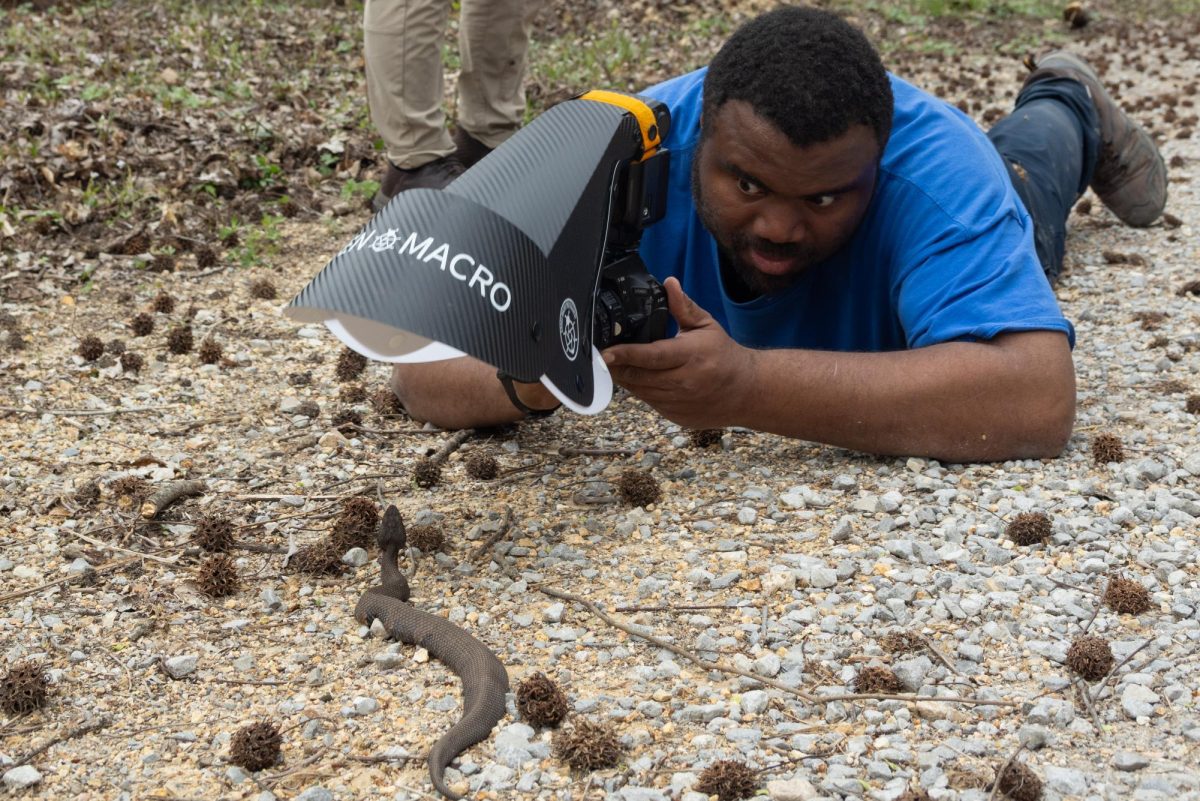Behind the sidelines
November 14, 2013
Working day-to-night shifts seven days a week, taping body parts and monitoring athlete’s health, the SIU athletic trainers devote an enormous amount of time to keeping athletes healthy.
Trainers must not only be on call during the season, but work in the off-season as well. The athletic trainers work with players to help strengthen their bodies for upcoming games or the following year.
The athletic training staff consists of a group of one assistant athletic director, assistant trainers, graduate assistant trainers and undergraduate workers.
Advertisement
Larger sports such as football, requires more training staff.
Ryan Schneider, a graduate assistant who received his bachelors of science in athletic training at Millikin University, is an SIU athletic trainer, who covers football and men’s and women’s tennis.
Hours before game time, Schneider along with other trainers set up the field, dragging out 10 gallons of ice, setting up stationary bikes and laying out towels. Not only are these items used for the players, but also for the band and cheerleaders.
Throughout game day, the training room will show the same field setup, only adding materials such as tape, rollers or patches. The athletes are able to use ultrasounds, which could be used therapeutically as a deep heating treatment.
Prior to kickoff, nearly 4 out of 5 of the men get at least one part of their body taped. Most SIU football players suffer minor shoulder injuries and ankle sprains due to tackles and other gameplay on the field.
At Millikin University, Schneider was a college athlete and he found himself interested in the medical aspect. Although football is not his favorite sport, he was interested in making it a part of his athletic training experience.
“Before I got here I knew I really wanted a football position,” Schneider said. “Football is looked at as the gold standard in athletic training so if you can do football that is such a high contact sport, it is pretty much assumed you can cover any other sport.”
Advertisement*
Lee Land, the assistant athletic director for sports medicine and performance oversees the athletic trainers. Land is in charge of the health care of every student athlete and deals with policy issues as well as athlete’s physical coordination. Land is also the head athletic trainer for football.
Although people may think men and women’s bodies are completely different, Land said the biggest difference he sees is the mentality between the two. While most men may seem tougher than women, Land said that’s not always the case.
“I have female student athletes where everybody’s perception of them is that they’re not as strong or not as tough but they would run through a brick wall,” Lee said. “Then there are males athletes where I’m like, really? That’s all you’ve got?”
Not only do trainers work on athletes bodies themselves, they also send athletes to physicians. After an athlete’s injury, an athletic trainer may evaluate the athlete. If the trainers need a further opinion, they will send the athlete to the Student Health Center.
Crystal Zeigler, a graduate assistant who also studied at Millikin University knew Schneider when the two were in school together in Decatur. Zeigler is the only graduate assistant who covers women and men’s track & field and cross-country.
As athletes travel to different cities or states, there is always an athletic trainer on sight. Before the cross country teams take off for a long distance run, Zeigler does treatments and taping.
Most recently, as the cross-country teams traveled to Iowa on Nov. 2, Zeigler was able to watch the teams sweep Missouri Valley Conference titles.
Ziegler said watching the cross-country teams win was her most rewarding moment thus far.
“We have a male and a female athlete that we’ve been just getting through these last few weeks with minor injuries,” Zeigler said. “And to see both of them do pretty well two weeks ago was very exciting.”
Trainers work to keep Saluki athletes in the game
Another set of Zeigler’s runners, although rather different, is the track and field team. Track and field athletes vary from throwers, jumpers, distance runners, sprinters and other positions. She said, these athletes are more prone to back strains from heavy lifting.
Depending on what sport an athlete plays, they tend to strain a particular part of their body differently than another sport. For example, baseball and softball athletes seem to accumulate more shoulder and overhead injuries, said Land.
“When 300 pound guys run into each other and something breaks it’s usual pretty easy to figure out what it is,” Land said. “With sports like track and field and swimming with a lot of overuse injuries things are a lot more subtle.”
After spending such long hours in the training room everyday, the athletic trainers begin to build a relationship with the athletes.
“We get personal relationships with a team of 100 athletes like football or some of those smaller sports like golf,” Land said. “No matter what, we know who all of them are.”
The athletic trainers are not only important to the athletes, but the fans as well. The trainer’s goals are to help athletes as much as they can, and get them back on the field or court stronger than they were.
“Our job is to get them better as much as we can,” Land said. “And if we can improve them to the point where they play better than before, then that’s great.”
Advertisement









